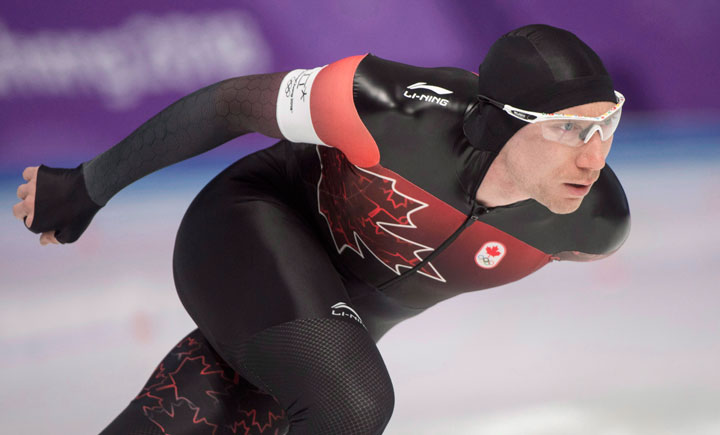Canada’s long-track speedskaters have a little something up their Olympic sleeves in Pyeongchang.

“We have brought into the arms (of the suits) ceramic dots,” says suit designer Stephane Roy. “The width, or diameter, is actually 1.5 millimetres, but it gives a little more upload very much like the wings on a plane.
“We are actually calculating the air coming on the arms and the legs of the athletes. The goal is to get this air out of the legs and the arms as quick as possible.”
The president of Quebec-based Apogee, which also designed the team’s speedskating suits for the 2014 Winter Olympics, says this edition spent about 20 hours undergoing wind-tunnel testing at the National Research Council of Canada in Ottawa.
“We know how to bring speed into the suit,” Roy explained. “When you get faster than 45 kilometres hour, it’s becoming really, really important to get the right fabric and the right placement.
“We’re bringing to the suit, tiny things, ceramic dots. We’re doing a blend of rubber, plastic, kevlar, dyneema and honeycomb stretch, 3-D effect.”
Each suit costs roughly $1,200 to make and is custom fitted for each athlete’s body, he added.

Get breaking National news
WATCH: Ted-Jan Bloemen takes home gold in speed skating, his second medal of the games

The suit is predominantly black tinged with red featuring a dominant Maple Leaf across the right side of the torso, with smaller leaves in it and adorning the sleeves and the legs as well.
“It’s awesome to know we’re in the fastest most aerodynamic skin suit in the world, but in the design of this year’s suit is a big Maple Leaf with a bunch of small Maples Leafs filling different parts of the suit,” four-time Olympian Denny Morrison said.
“It’s Maple Leafs on top of Maple Leafs on top of Maple Leafs and that’s the group of people to each individual athlete who maybe brought them there whether it be teammates, support staff, coaches or family.”
The men’s and women’s team pursuits Wednesday, men’s 1,000 metres Friday and men’s and women’s mass starts Saturday conclude the Olympic speedskating competition.
Own The Podium’s science and tech arm Innovations For Gold helped pay for the development of the 2018 suit, said Speed Skating Canada’s long-track high performance director Cara Thibault.
“The first concept of this suit was probably three quadrennials back,” she said. “The changes have been over the course of 10 years in seeing what works, seeing what materials come out that could potentially be better, bringing them into the wind tunnel, moving the materials around different parts of the body.
“Seeing where they would be most effective for distance athletes or sprinter athletes and then pulling it all together.
“It could make a big difference or it could be pretty small, but a one per cent in a 500 metres could be very significant.”
The suits are legal, Thibault said, under International Skating Union rules. Officials can demand to look at a skater’s suit if they are suspicious that it is not, she added.


Comments